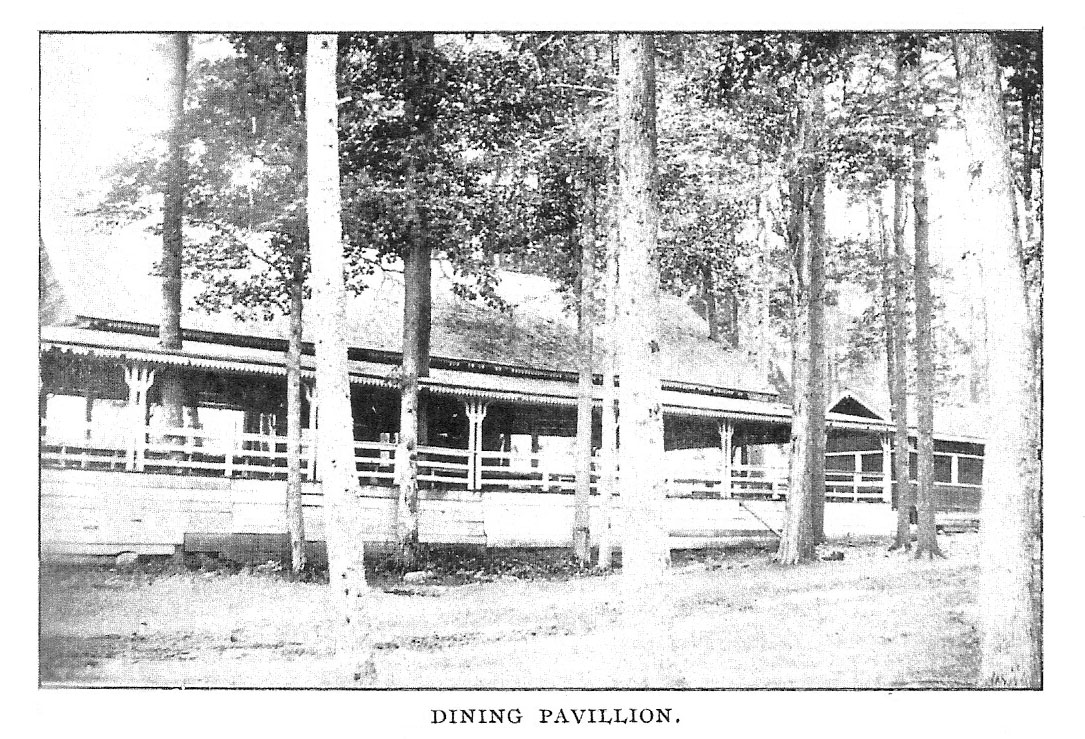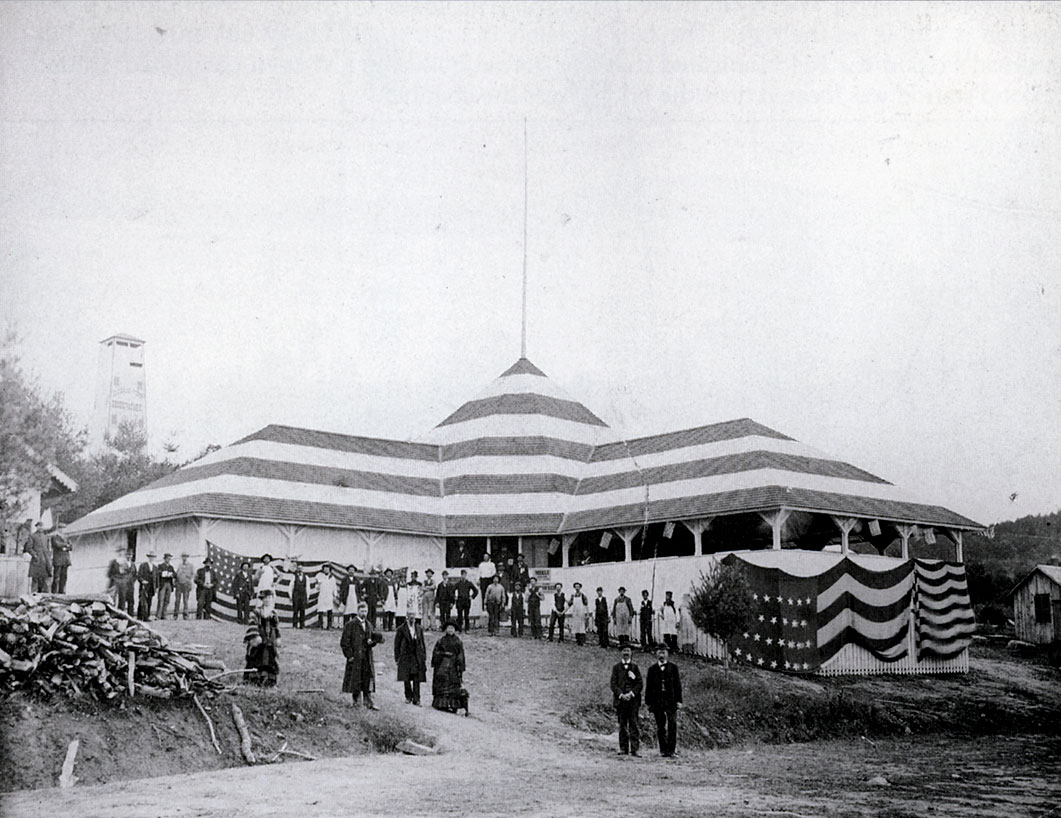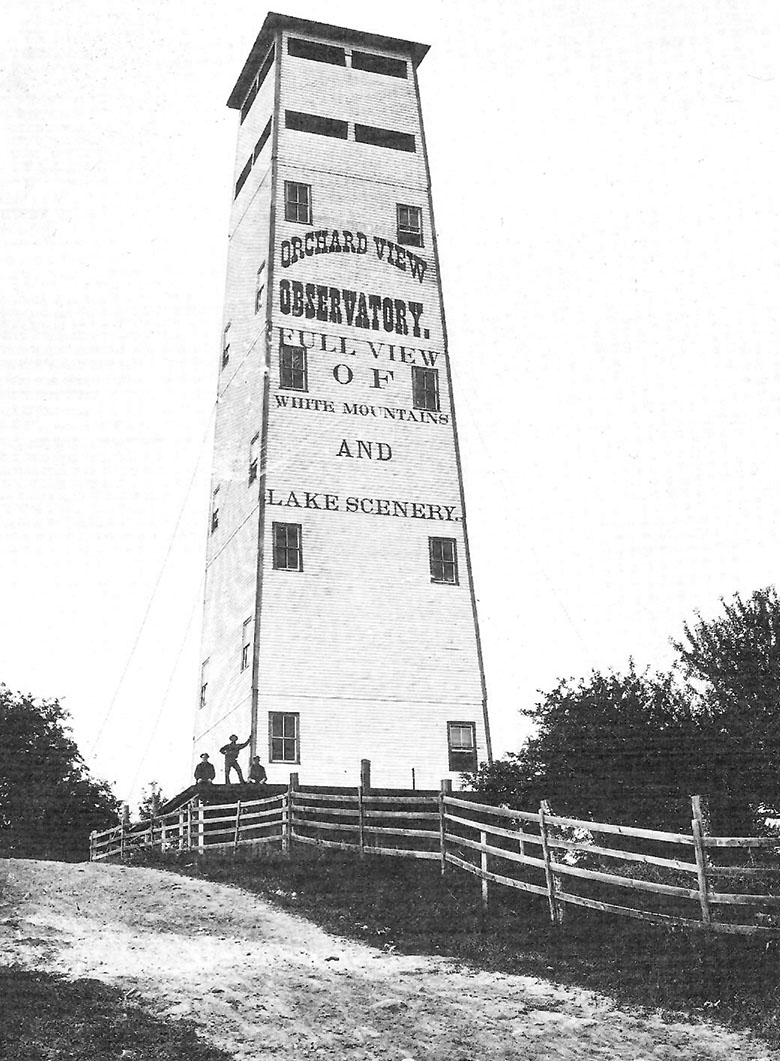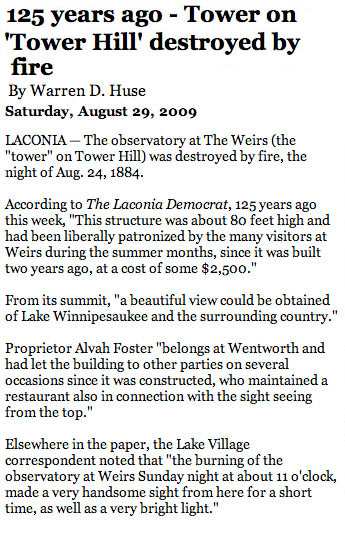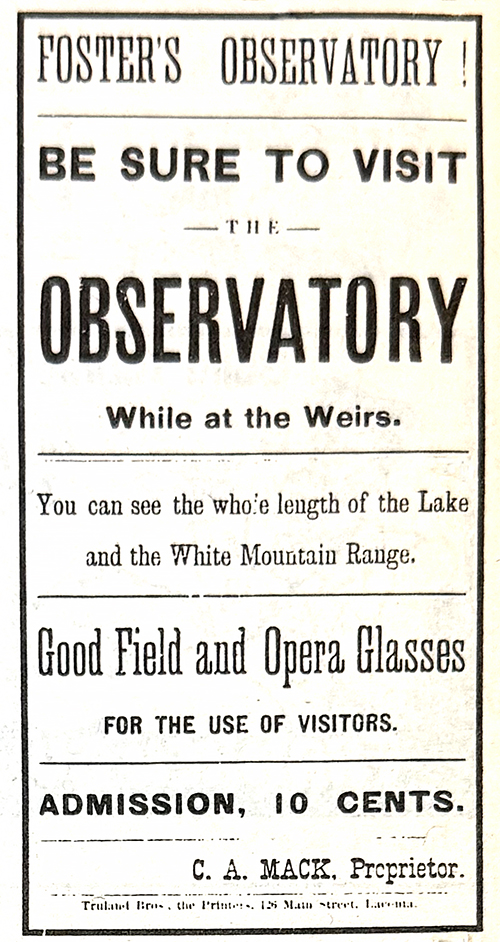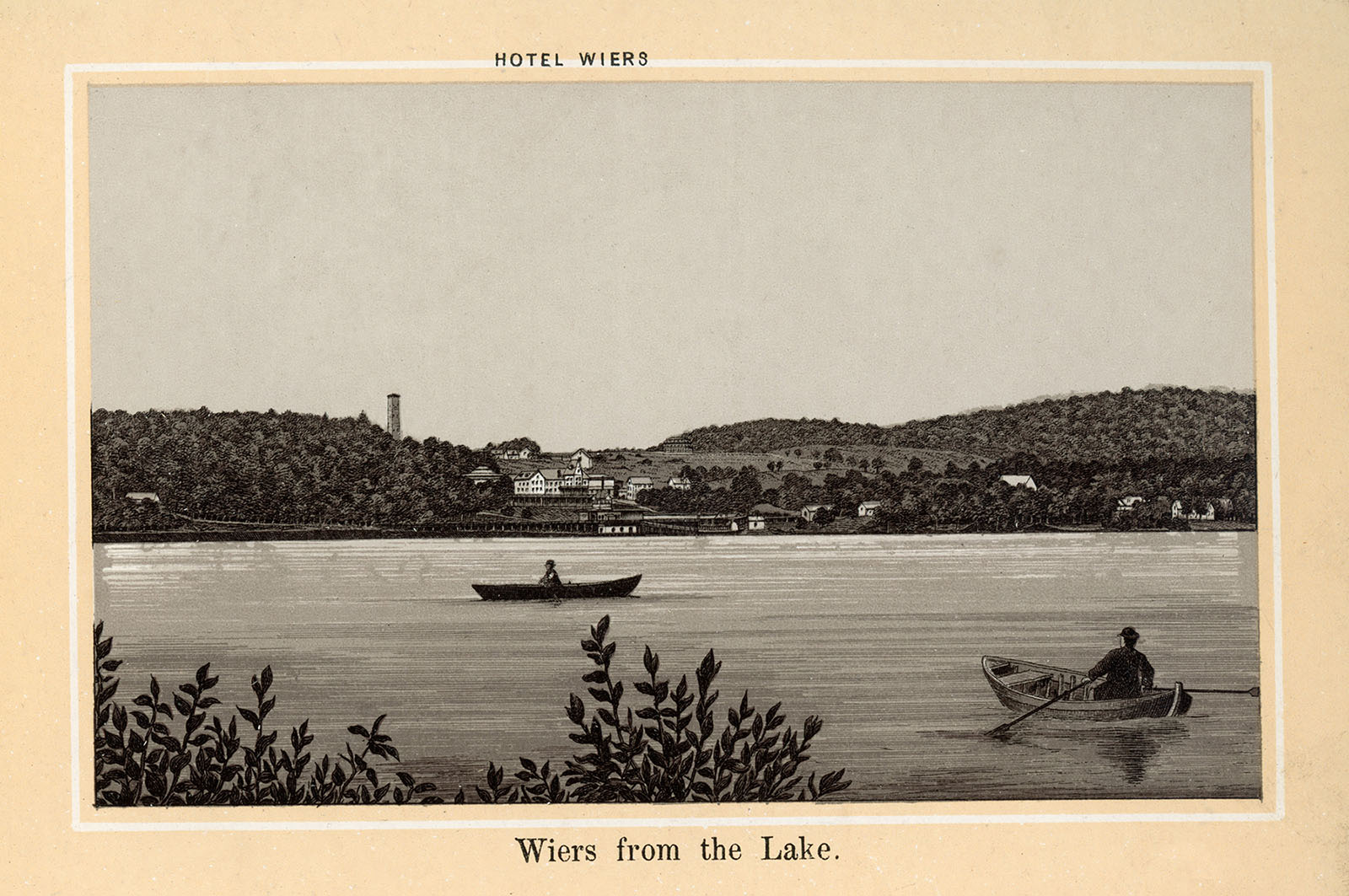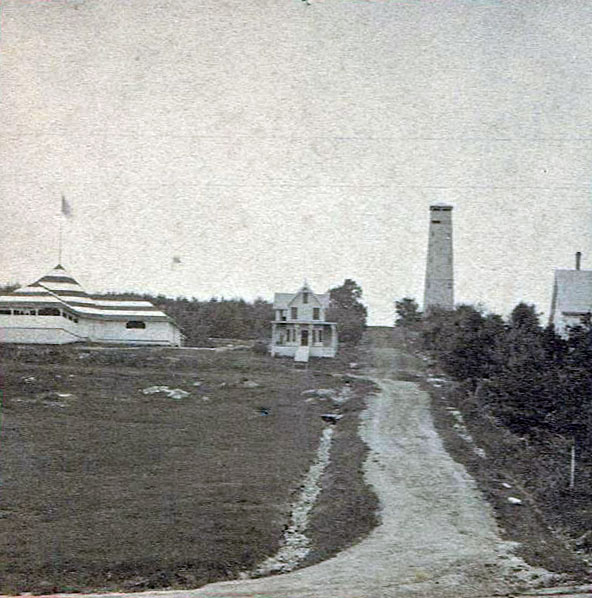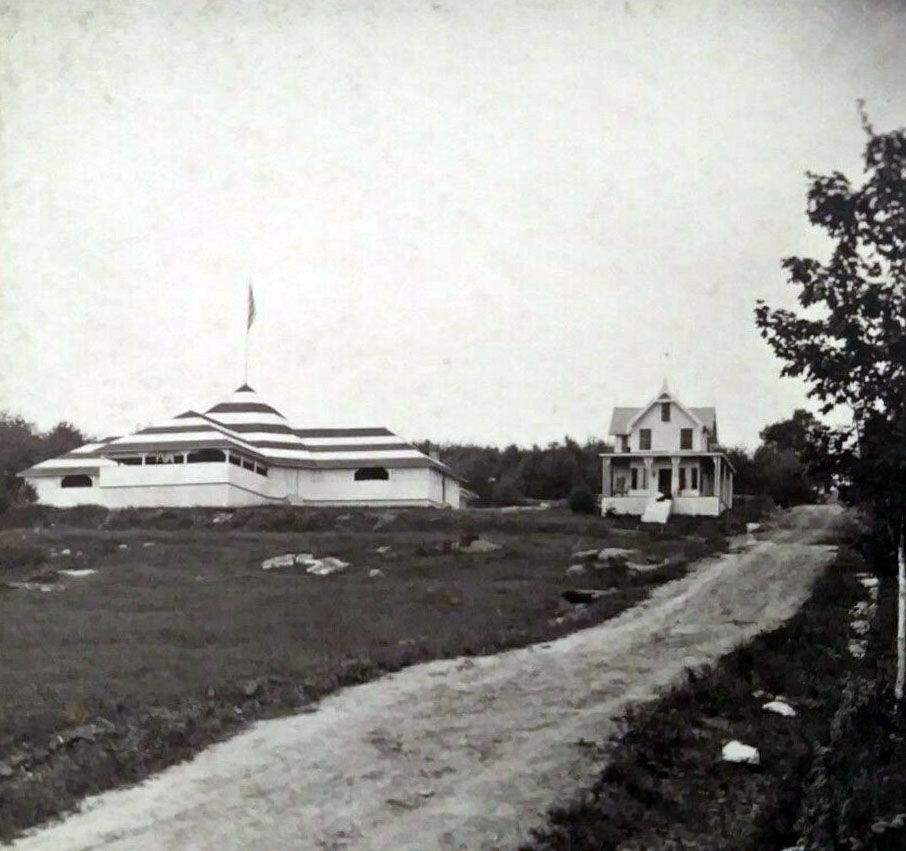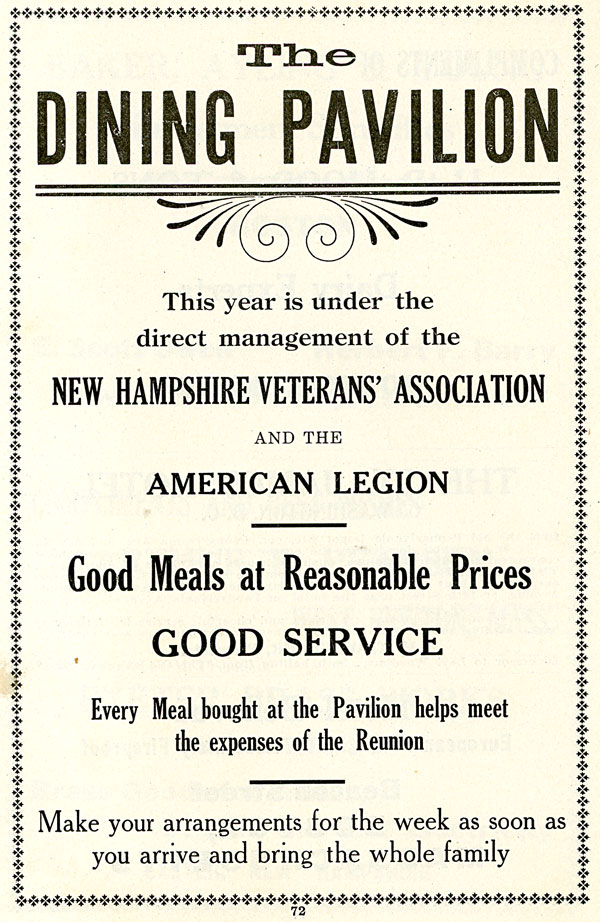The Dining Pavilion and The Observatory
Veterans Dining Pavilion (1883-1950) in 1897. Weirs Beach’s first “Pavillion”. Later, the Winnipesaukee Marketplace was known as the “Food Pavilion” from 1988-2000. (The correct spelling of the word “Pavilion” is with only one “L”.) Although one can’t tell from the black and white photo below, the “Pavillion” was painted red, white and blue.
An early view of the Dining Pavilion, likely taken during its first season in 1883. The observatory on the upper left of the photo was built in 1881. It was known as the Orchard View Observatory and was the tower for which Tower Street was named. In late November, 1883, a strong wind storm shifted the Observatory a foot and a half off of its foundation, but the structure held together and its footings were repaired. The Observatory burned down on August 24, 1884.
Below, a view of the Observatory from a stereoscope card by the Weirs Photograph Co. (photographers T.C. Moon and F.J. Moulton). The Winnicoette hotel can be seen in the distance on the lower right. The lettering on the building reads, “Orchard View Observatory. Full View of White Mountains and Lake Scenery.”
Here is an engraving of the Weirs Beach waterfront, as it looked from 1883 – 1884. Seen from left to right are the Observatory, the roof of the Dining Pavilion, the Hotel Weirs, and the Winnicoette. On the waterfront, the Second Weirs Beach Train Station is drawn, along with a ramp leading down to a barely visible Lady of the Lake steamship. From a 12-page accordion booklet published by the Chisholm Bros, “Picturesque New Hampshire”.
Below is a front page article from “Veteran’s Knapsack”, an 1880 newspaper published by the NHVA for the 4th reunion honoring Corporals James K. Lane:
Veterans and their friends will not forget that we have a [restaurant] of our own at Weirs. The dining pavilion is the gift of generous friends to the Veterans. It is run by the Association, and for the benefit of the Association…It is part and parcel of the Camp, and will so continue as long as Comrades shall meet in reunion. The boys…”boys” still, though bending beneath the weight of years – appreciate the pleasures of reunion at “rations”. A reunion without this feature would be incomplete. The hallowed glories of the supply trains and the camp kettles have not yet been effaced from the Veteran’s memory. There is, to be sure, a little smack of business in this latter day arrangement, which was not found in the [field]; but “grub” is furnished at bottom prices, and the proceeds, if any, go towards defraying the expenses of the Camp…[so] “Fall in for rations!”











